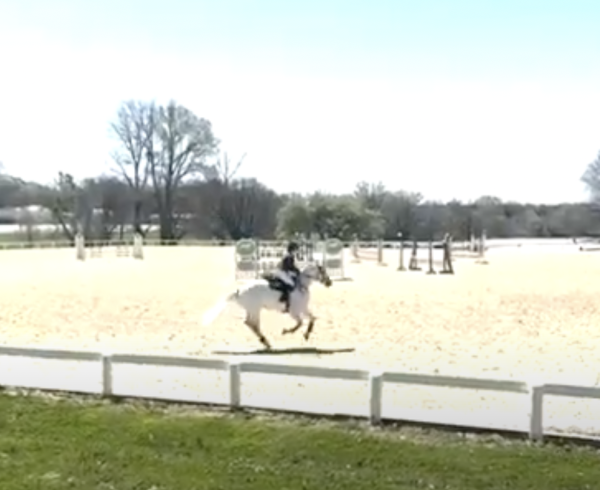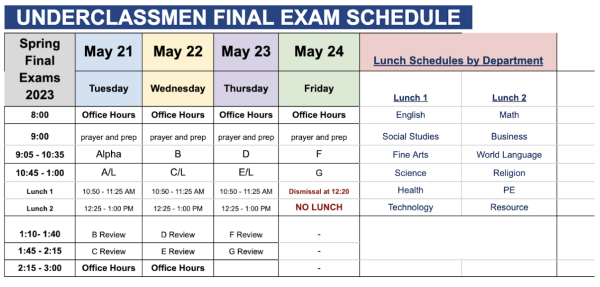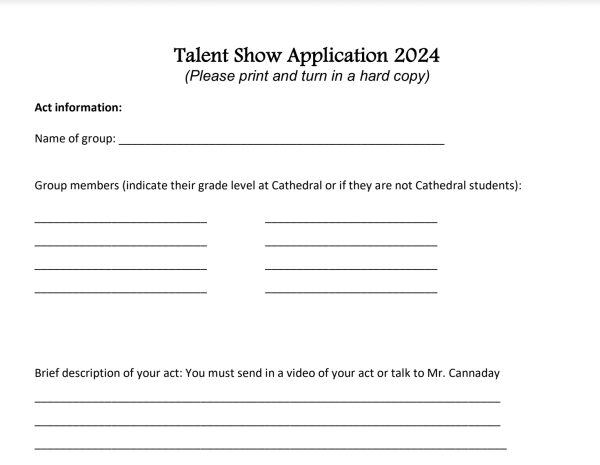Next year’s schedule to involve four-day rotation
As of now, an activity period is not built in
Vice Principal Mr. Mark Matthews has provided an overview of the process that was used to select next years four-day rotating academic schedule.
Schedule changes are a common occurrence on the Hill. In previous years there has been a five- or seven-day schedule, but for the 2022-23 school year, a four-day rotating schedule will be in effect.
This is not similar to a schedule in the past, but will allow for students to meet with each of their classes more often. This was voted on by teachers and staff against the other options of keeping the five-day schedule or switching to a seven-day schedule.
“We laid out all of these schedules and sent a survey to all the teachers and asked them to vote for which one they thought best served their students and the classes they teach, and to explain why they voted for that. Then the Academic Leadership Team read all of the results and the reasons for the one they chose,” said Vice Principal for Academics Mr. Mark Matthews.
The Academic Leadership Team discussed the possibilities and shared the information with others. The teams consists of Principal Mrs. Julie Barthel, Vice Principal for Academics Mr. Mark Matthews, science teacher Dr. Aarti Brooks, science teacher Mr. Howard Fogel, English teacher Mrs. Lizabeth Bradshaw, English teacher Ms. Ashley Hill and Vice Principal for Academic Support Mr. Brett Blondi.
The start and end times for the school year are similar to this year, now starting at 8:40 a.m. and concluding at 3:15 p.m. Changing the times affects extracurriculars and other activities for students. Office hours and an activity period were implemented in this school year.
Next year, there will not be an activity period built in, but adjustments will be made when needed. Office hours could also face changes to better help teachers and students. The Academic Leadership Team is considering different options for these.
Matthews said, “We will have to have an activity period that is built in and we have a couple of schedules for the activity period depending on how long we need. When we have these activities, it will just fit into whatever day in the rotation it is.”
The state does not mandate how long classes meet. The only mandate is that there must be 180 days of instruction. With the new schedule, students will have the advantage of meeting with their classes more often. One of the changes to the schedule is that there will be six 55-minute classes each day.
“One of the non-negotiables was moving the start of school. In the previous schedule(s), classes started at 7:50 a.m, and we didn’t want to go back to that because research has shown that the later start is more beneficial for high school students,” Matthews said.
This same research displays the advantage of starting school later with the opportunity for students to have more sleep. This is reflected through grades and participation.
A change in the 2021-22 school year was the addition of J-Term. This allowed for students to explore possible career options outside of school. J-Term is implemented into the upcoming school year. However, with how the calendar year is, there will only be eight days rather than two weeks. This change is due to winter break, which will be Dec. 21 through Jan. 3 for students. Teachers will have a work day on Jan. 3, with J-Term beginning Jan 4.
The final academic schedule is still subject to change, but administrators hope to bring positives for both teachers and students. Matthews emphasized the importance of time management for students. He said, “It depends on what the schedule looks like for individuals, but in the end, it’s just a schedule. How (students) work with that schedule and budget (their) time, and how teachers choose to use that time, is up to the individual.”

Caroline Schilling is the Megaphone Executive Editor and a Cathedran photographer. She has been on Megaphone staff since her freshman year. Caroline is...












